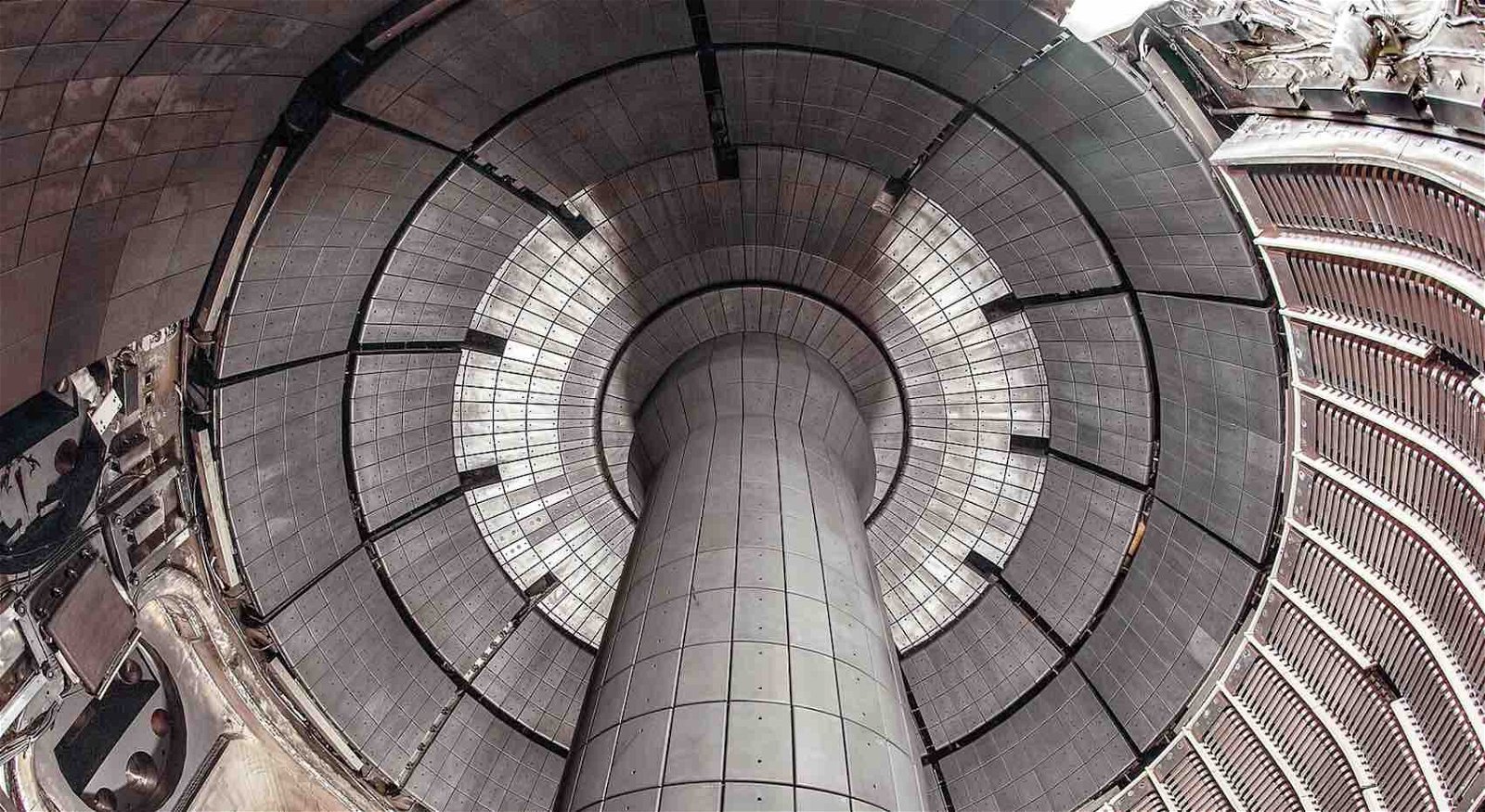Researchers at the U.S. Department of Energy’s Princeton Plasma Physics Laboratory (PPPL) have developed a new strategy in the quest to harness fusion to produce electricity: combining two existing methods of managing plasma to allow greater overall flexibility.
The PPPL team’s new dual approach brings together electron cyclotron current drive (ECCD) methods with resonant magnetic perturbations (RMP), marking the first time a simulation showing how they can be used together could facilitate greater control of plasma during fusion reactions.
In simple terms, fusion produces energy by replicating the natural processes occurring on the surface of the Sun. This is achieved by merging two light nuclei to form a single heavier nucleus, a process that releases energy because the while the resulting nucleus is heavier, its total mass is still less than the mass of the two original nuclei that were merged.
Producing energy in this way is difficult to replicate on Earth, however, and requires the generation and control of incredibly hot gases called plasmas, which can be controlled using electric and magnetic fields since the electrons and ions they possess have electrical charges.
Qiming Hu, a PPPL staff research physicist working at the DIII-D National Fusion Facility, owned by General Atomics, says the team’s dual approach is a novel one, and while all the specifics are still being worked out, he and his team are very close to making this new approach a reality, as described in a new paper he and his colleagues have written.
“The full capabilities are still being figured out, but our paper does a great job of advancing our understanding of the potential benefits,” says Hu, the lead author of the team’s new paper, who notes that the process they outline has also been demonstrated experimentally.
Before fusion can be used to reliably produce electricity, scientists are working to discover ways they can reduce the occurrences of particle bursts that are produced from plasma, which are called edge-localized modes (ELMs).
“Periodically, these bursts release a little bit of pressure because it’s too much. But these bursts can be dangerous,” Hu said in a statement.
The device Hu and his colleagues work with at PPPL’s DIII-D National Fusion Facility is a tokamak, which relies on magnetic fields to confine fusion plasma into the shape of a donut.
Researchers are working to find ways to prevent ELM bursts from occurring, since they can interrupt a fusion reaction causing it to prematurely end and may even result in damage to the tokamak.
Alessandro Bortolon, a PPPL Principal Research Physicist and one of the new paper’s co-authors, says the best method the team has found yet is by using resonant magnetic perturbations (RMPs) to generate additional magnetic fields to help contain the volatile plasmas.
Winding around the outer edge of the donut-shaped plasma and through the central hole, the tokamak’s primary magnetic fields are applied by the device while additional magnetic fields created by RMPs travel directly through the plasma, together resulting in oval or circle-shaped magnetic “islands” which, under most circumstances, are not something fusion scientists hope to see.
“Normally, islands in plasmas are really, really bad,” Bortolon says. “If the islands are too big, then the plasma itself can disrupt.”
That isn’t to say they can’t be helpful under the right conditions. Past experiments had already shown that the creation of these magnetic islands can be helpful, although it requires the generation of RMPs that are powerful enough to create them.
Enter the electron cyclotron current drive (ECCD), which assists through the injection of a microwave beam at the plasma’s edge, which altogether reduces the current required to generate RPMs strong enough to produce magnetic islands.
Using this process allowed the PPPL team to create islands at just the right size to ensure maximum plasma edge stability. This works because the RMPs function similar to switches that turn islands on, while the ECCD performs similar to a dimmer switch, where the size of the islands can thereby be adjusted in order to produce plasmas at manageable sizes.
Additionally, the team broke from conventional approaches by adding the ECCD to the plasma’s edge, rather than in its core as is most often done in such experiments. One reason this is normally avoided is because of the potential risks that microwaves can present to components in the tokamak, although Hu and his team say they have found an approach that allows it to be done safely.
“We’ve shown that it’s doable, and we’ve demonstrated the flexibility of the approach,” Hu said in a statement. “This might open new avenues for designing future devices.”
Hu says that in their theoretical models, the ECCD added in the same direction as the current in the plasma resulted in islands with lesser widths and increases in pedestal pressure. “Applying the ECCD in the opposite direction produced opposite results, with island width increasing and pedestal pressure dropping or facilitating island opening,” Hu says.
Overall, reducing the amount of current that is generally required to produce RMPs could pave the way toward more cost efficient fusion energy production, and potentially may also help with the creation of commercial scale fusion devices.
The PPPL team’s new paper detailing their findings was published in the journal Nuclear Fusion.
Micah Hanks is the Editor-in-Chief and Co-Founder of The Debrief. He can be reached by email at micah@thedebrief.org. Follow his work at micahhanks.com and on X: @MicahHanks.

